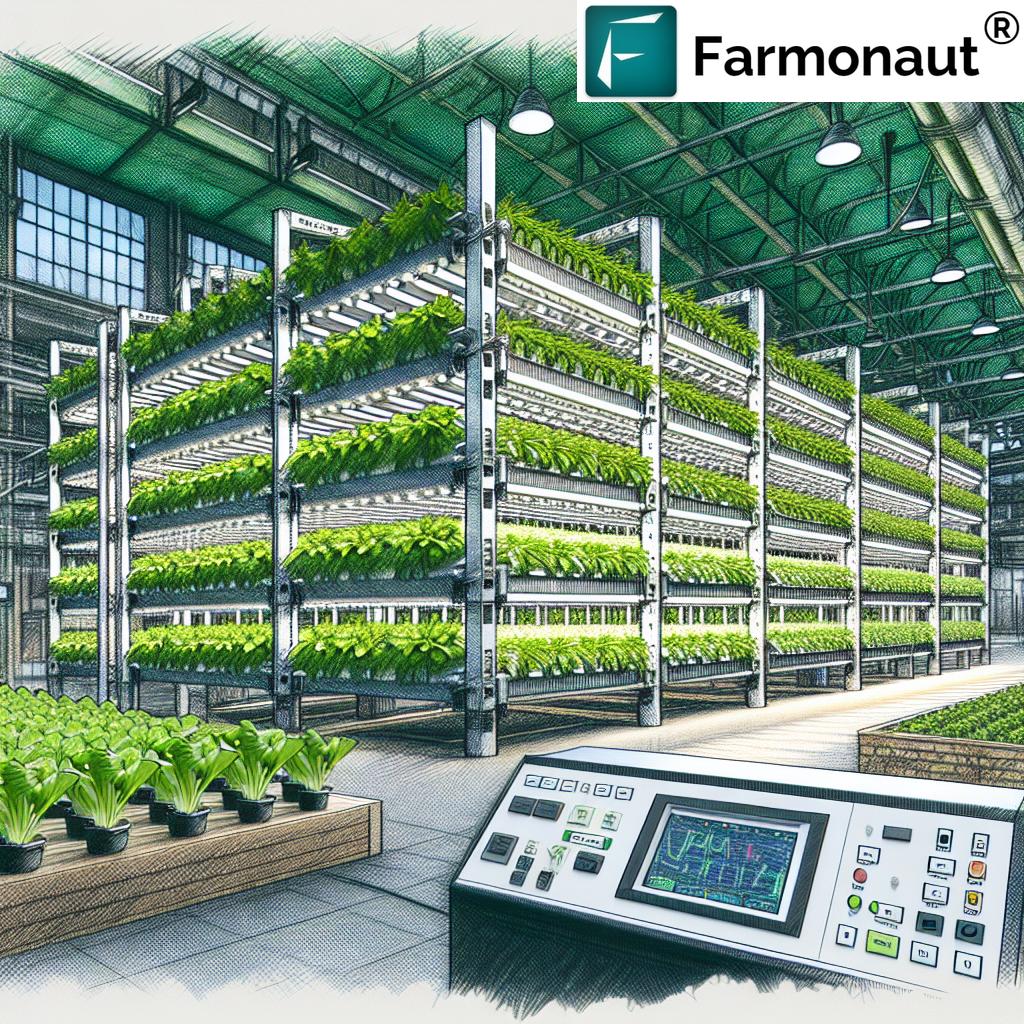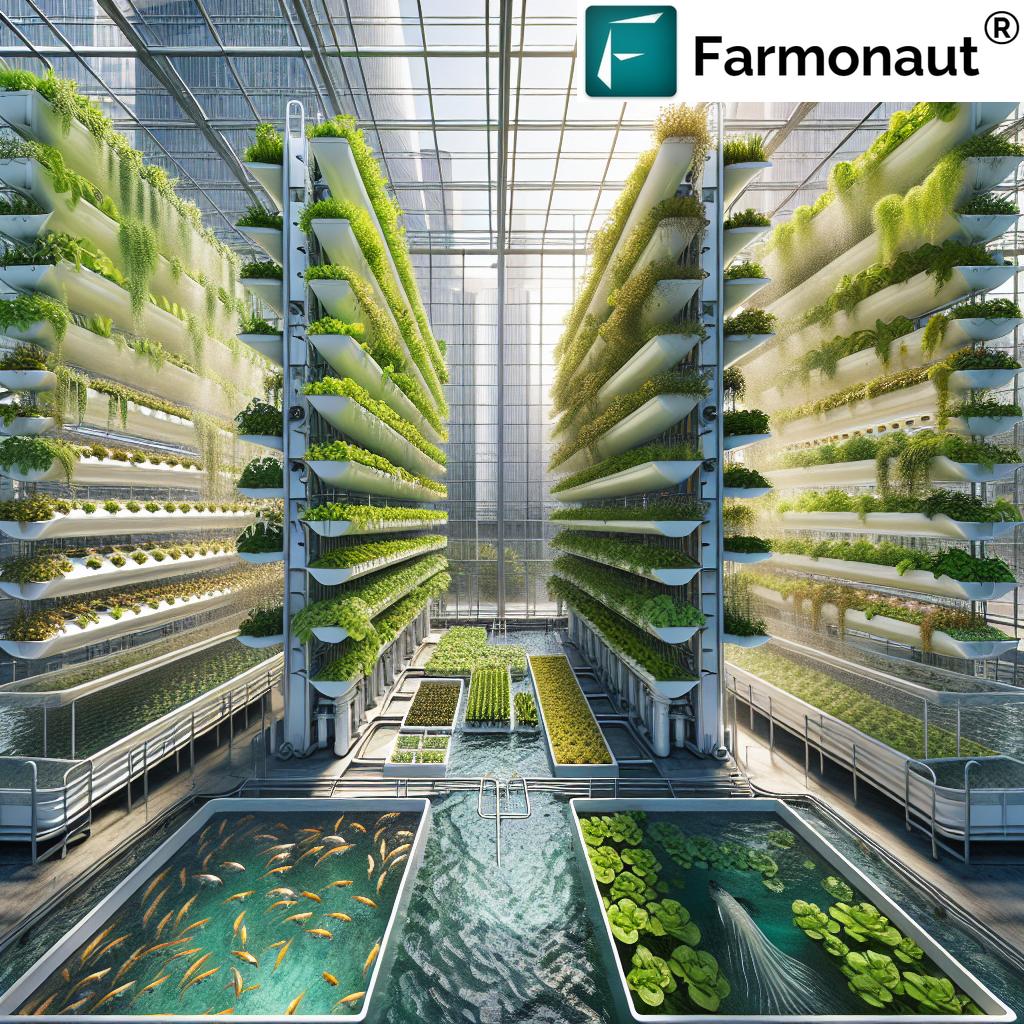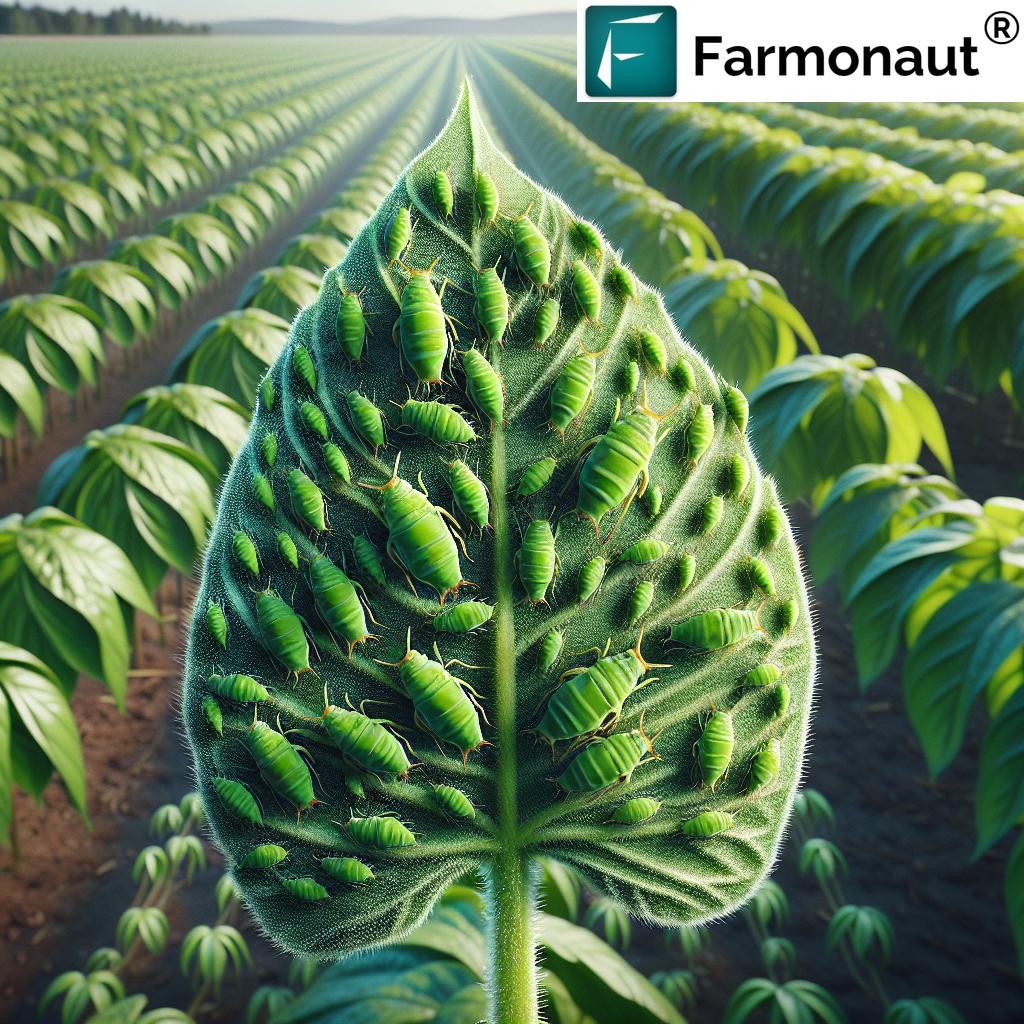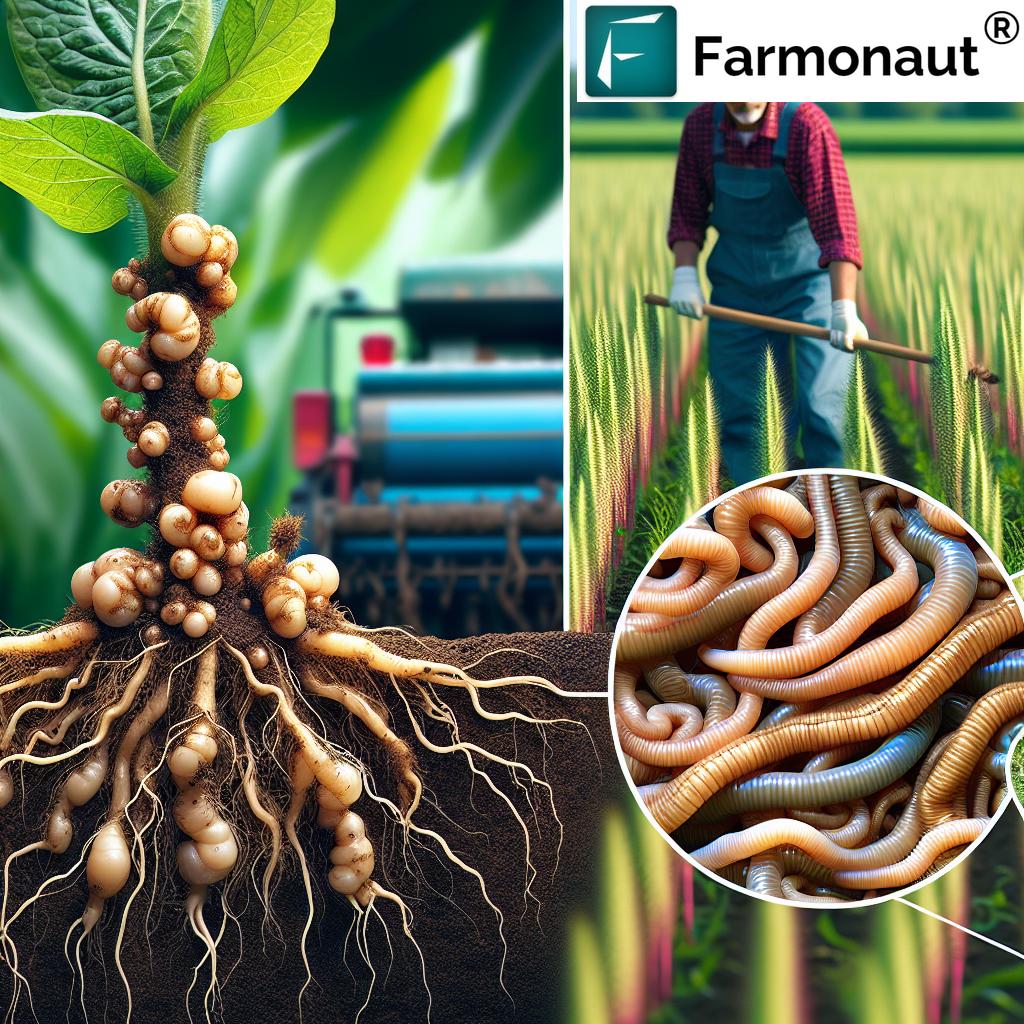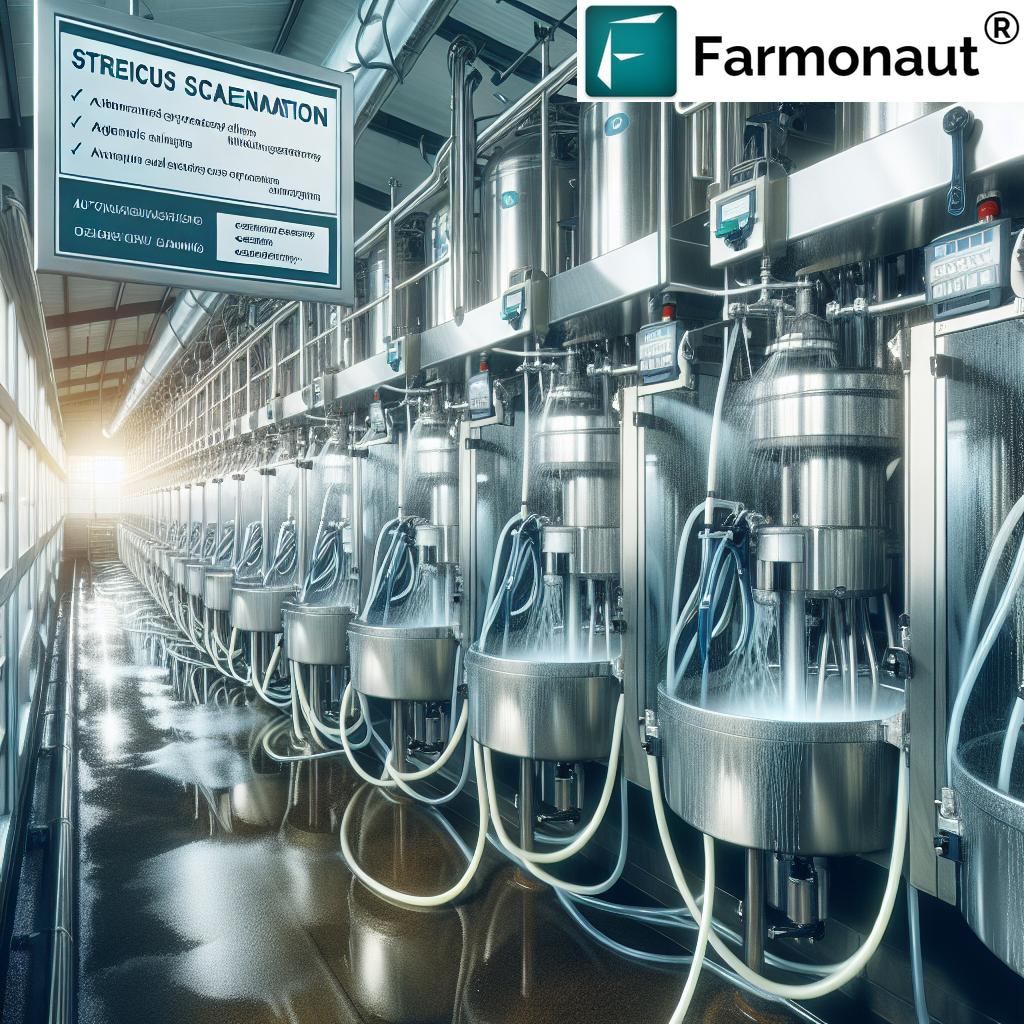What Is Vertical Farming? Discover 7 Powerful Benefits Today
- Introduction: The Vertical Farming Revolution
- Historical Background: The Evolution of Vertical Farms
- Technological Foundations: Hydroponics, Aeroponics & Aquaponics
- 7 Powerful Benefits of Vertical Farming
- Vertical Farming vs Traditional Farming Comparison Table
- Real-World Applications: Recent Developments
- Farmonaut: Empowering Modern Agriculture With Satellite Technology
- Challenges & Considerations in Vertical Farming
- The Future Outlook of Vertical Farming
- Frequently Asked Questions
- Start Your Smart Agriculture Journey with Farmonaut
“Vertical farming can use up to 95% less water than traditional agriculture, making it highly efficient for urban environments.”
Introduction: The Vertical Farming Revolution
As the global population swells and urbanization accelerates, traditional agricultural methods struggle to keep pace with growing food demand and evolving environmental challenges. Enter vertical farming—a groundbreaking agricultural practice at the intersection of technology & innovation—that reimagines how we grow, distribute, and consume food in the 21st century.
Vertical farming involves cultivating crops in stacked layers or on vertically inclined surfaces, often within urban structures such as skyscrapers, shipping containers, and repurposed warehouses. This approach leverages controlled environment agriculture (CEA)—systems that optimize plant growth by precisely regulating variables like light, temperature, humidity, CO₂ levels, and nutrients.
By utilizing advanced hydroponics, aeroponics, and aquaponics methods, vertical farms maximize space efficiency, water conservation, and year-round urban food production—all while reducing the need for harmful pesticides and slashing carbon emissions from transport.
In this comprehensive guide, we explore the historical background, main technologies, and 7 powerful benefits of vertical farming. We’ll also cover its challenges, real-world applications, and future outlook, along with how cutting-edge satellite solutions, such as those by Farmonaut, are driving the ongoing agricultural revolution.
Historical Background: The Evolution of Vertical Farms
While “vertical farming” may seem like a futuristic concept, its roots trace back several decades. Let’s journey through the history and development that laid the groundwork for today’s modern vertical farming movement.
Early Innovations & Greenhouse Beginnings
- Greenhouse agriculture first established controlled environments for plants, allowing for out-of-season and enhanced crop production. These early greenhouses set the stage for later innovations.
- In the mid-20th century, the British Interplanetary Society notably developed a hydroponicum for lunar conditions, pioneering the integration of plant cultivation with advanced building designs.
- The Armenian tower hydroponicums are among the first documented vertical farms, innovatively stacked in layers for space efficiency. These were detailed in James Sholto Douglas’s influential work, “Hydroponics: The Bengal System” published in 1951.
Modern Movement & Urban Integration
- Early prototypes and hydroponic building designs gradually evolved into the sophisticated, indoor vertical farming systems we see today—integrated seamlessly into urban skyscrapers and repurposed warehouses.
- As urban food demands grew and arable land declined, innovators sought solutions that maximize crop yields in minimal space, laying the foundation for scalable urban food production.
Today, vertical farming stands as a promising solution for sustainable crop cultivation, building upon technological advances and decades of research. Its historical evolution shows a clear shift toward more efficient, precise, and urban-centric agricultural systems.
Technological Foundations: Hydroponics, Aeroponics & Aquaponics
The core of indoor vertical farming systems lies in pioneering soil-less cultivation methods. These technological foundations revolutionize the way plants receive water and nutrients, ensuring optimal growth and resource efficiency. Let’s dive into the primary systems powering today’s vertical farms:
Hydroponics: Efficient Nutrient Delivery
- Hydroponic agriculture is the most widely used method in vertical farming today.
- Plants grow in a nutrient-rich water solution—without soil—enabling precise control over nutrient levels, pH, and water usage.
- Benefits: Reduces water waste, minimizes disease risk, and increases yield per square meter. Little to no pesticides required due to controlled environments.
Aeroponics: Airborne Root Growth
- Aeroponics suspends plant roots in the air, regularly misting them with a nutrient solution.
- This method maximizes oxygen exposure and enables rapid nutrient uptake and accelerated plant growth.
- Benefits: Outstanding water efficiency, superior nutrient absorption, reduced risk of soil-borne pathogens.
Aquaponics: A Symbiotic System with Fish
- Aquaponics integrates hydroponic cultivation with aquaculture (fish farming).
- Fish waste provides organic nutrients for the plants, while the plants filter and purify water for the fish.
- Benefits: Closed-loop, natural ecosystem; organic fertilization; minimal external inputs required; supports sustainable food production.
“Hydroponic vertical farms can yield up to 10 times more crops per square meter compared to conventional farming methods.”
7 Powerful Benefits of Vertical Farming
With vertical farming, we can address many of agriculture’s toughest challenges, from land scarcity to sustainability and food security. Here’s how this innovative agricultural practice transforms the future of farming, especially for growing urban populations:
1. Space Efficiency & Maximum Land Utilization
- Vertical farms stack crops in layers—often reaching several stories high—enabling us to cultivate much more food in far less space, even in the heart of cities.
- This is critical for urban food production, where available options for farmland are limited, and land costs are high.
- Vertical farming allows us to repurpose existing structures (warehouses, skyscrapers, containers) for agricultural use—reducing the environmental impact associated with clearing new land.
2. Dramatic Water Conservation
- With precise control and recirculation of water, hydroponics, aeroponics, and aquaponics systems use up to 95% less water than traditional soil-based farming.
- Efficient water usage in farming reduces costs, minimizes waste, and is especially critical in drought-prone or water-stressed regions.
- Closed-loop systems in vertical farms drastically cut down on evaporation and runoff.
3. Reduced Chemical Usage & Pesticide-Free Produce
- The controlled environment agriculture (CEA) of vertical farms keeps pests at bay and eliminates weeds, resulting in a significant reduction—or elimination—of the need for pesticides and herbicides.
- This leads to healthier, cleaner produce, safer for people and the environment. Reduced chemical runoff means less contamination of water systems and soils.
- Environmental benefits are greatly enhanced through minimized inputs and decreased pollution.
4. Year-Round, Consistent Food Production
- By precisely controlling temperature, humidity, light, nutrient levels, and CO₂, we can grow crops any time of year, regardless of outside weather conditions.
- This ensures reliable, resilient food supplies—as well as stable pricing—for urban areas with fluctuating seasons or harsh climates.
5. Local Food Production & Lower Transportation Costs
- Urban vertical farming means food can be grown directly within or adjacent to urban centers—cutting down on transportation costs and drastically reducing the carbon footprint associated with shipping perishables over long distances.
- This leads to fresher, more nutritious produce reaching consumers quickly, with less spoilage and fewer greenhouse gases.
- Enhancing food security: By decentralizing food production, vertical farms insulate cities from supply chain disruptions.
6. Enhanced Crop Yields & Resource Efficiency
- Hydroponic vertical farms can yield up to 10 times more crops per square meter than traditional agriculture by optimizing environmental conditions and enabling multiple crop cycles per year.
- Automation and data-driven system management further enhance efficiency.
7. Sustainable Practice & Environmental Impact Reduction
- By using less water, no soil, fewer chemicals, and generating fewer food miles, vertical farming systems make agricultural production more sustainable and eco-friendly.
- The use of renewable energy, energy-efficient LED lighting, and carbon tracking systems (explained later) takes vertical farming’s sustainability even further.
Farmonaut API: Integrate satellite data for real-time crop monitoring in your applications. |
API Developer Docs: Learn how to build precision agriculture solutions with Farmonaut’s API.
Vertical Farming vs. Traditional Farming Comparison Table
| Category | Vertical Farming | Traditional Farming |
|---|---|---|
| Water Usage | Up to 95% less than traditional | High; often 1000s of liters per kg crop |
| Land Requirement | Highly space efficient; stacked layers | Large land plots per crop |
| Crop Yield per Sq. Meter | Up to 10x higher | Baseline/reference |
| Energy Consumption | Higher (due to LED lighting & climate control) | Lower (reliant on sunlight) |
| Pesticide Use | Greatly reduced/none required | Regular application typical |
| Time to Harvest | Shorter; multiple cycles per year | Seasonal; subject to delays |
| Urban Suitability | Ideal for cities; can use rooftops, warehouses | Limited; needs rural/open land |
| Produce Freshness | Very high; local/urban harvest | Lower due to transport/storage |
As this table shows, vertical farming technology offers improvements in land and water efficiency, reduced pesticide usage, high yield, and unique urban suitability—though it comes with higher energy costs and technology requirements.
Real-World Applications: Recent Developments
Vertical farming is no longer an experimental concept; it’s a proven urban food production system with installations worldwide. Here are a few recent industry highlights:
-
Plenty announced a $680 million venture to build indoor farms in the UAE, aiming for 4.5+ million pounds of strawberries annually.
-
AeroFarms supplies fresh, vertically grown produce for in-flight meals, showing the value of freshness for hospitality and travel sectors.
-
Multiple startups have ramped up investment, introducing more advanced, automated systems for energy and labor savings.
As the market grows, vertical farms continue to push boundaries—adopting advanced CEA technologies, leveraging real-time data, and exploring new crop varieties beyond leafy greens.
Farmonaut: Empowering Modern Agriculture With Satellite Technology
For vertical farming—and agriculture in general—the ability to optimize resources and maximize yield is paramount. This is where Farmonaut transforms the landscape with its suite of advanced agritech solutions designed to drive both efficiency and sustainability.
Precision Monitoring & Resource Management
- Satellite-Based Crop Health Monitoring: Farmonaut harnesses multispectral satellite images to track crop health metrics, soil moisture, irrigation needs, nutrient levels, and pest pressures in real-time—enabling decision-makers in vertical farms and traditional field agriculture to intervene swiftly for optimal outcomes.
- Jeevn AI Advisory System: Using artificial intelligence, Farmers and agribusinesses receive tailored advice on crop management, resource use, and weather forecasting—supporting informed decision-making and minimizing waste.
- Carbon Footprinting: Monitor and actively reduce the environmental impact of agricultural operations. This is crucial for sustainable urban and indoor farms aiming to minimize their carbon footprints, comply with global standards, and enhance brand value.
- Traceability Solutions: Leverage blockchain-based traceability to ensure full transparency for agricultural products—vital for food brands and fresh produce grown in high-tech, urban farm systems.
- Fleet and Resource Management: Efficiently manage logistics, monitor vehicles and machinery, and optimize operations at scale in both vertical and traditional agricultural enterprises.
- Crop Loan and Insurance Verification: Satellite-based verification assists banks and insurers in evaluating loan/insurance claims, supporting the financial resilience of farmers and agri-ventures.
- Large Scale Farm Management Tools: Farmonaut’s scalable platform suits farms of every size, automating reporting, audit trails, resource mapping, and compliance—a boon for enterprise-level agriculture.
Why Farmonaut’s Technology Drives Sustainable Crop Cultivation
- Data-driven insights: Make smarter, real-time adjustments in nutrient/calibration for maximum yield.
- Reduced input & waste: Only apply what’s needed, boosting resource efficiency and lowering costs.
- Promotes transparency: Blockchain traceability supports food safety and consumer trust, especially for urban and indoor-grown produce.
No matter the scale, Farmonaut brings actionable satellite intelligence and AI-powered automation to the center of modern farming—enabling us all to grow more with less, and pave the way for a sustainable food future.
Challenges & Considerations in Vertical Farming
Despite its promise, vertical farming has its hurdles. Let’s look at the major considerations that growers, investors, and communities must weigh:
- High Initial Investment: Setting up a vertical farm—especially with full automation and CEA technology—requires significant capital expenditure. ROI depends on efficient system design and stable produce demand.
- Energy Consumption: LED lighting and climate control are energy-intensive. Sustainable vertical farms increasingly use solar, wind, and energy recovery solutions, but energy costs remain a key factor.
- Technical Expertise: Managing nutrient solutions, plant health, and automation involves specialized skills in horticulture and systems engineering—meaning hiring and operational training are critical.
- Market Competition: Vertical farms compete with traditional growers and import/export networks. Their advantages (environmental impact, urban freshness) must be translated into competitive pricing and consumer willingness-to-pay.
- Crop Diversity Limitations: Currently best suited for leafy greens, herbs, and some fruits; expanding to staple grains and tubers is still a research frontier.
Ongoing technological advancements and collaboration in research, policy, and financial models are needed to address these challenges and scale up the adoption of vertical farming globally.
The Future Outlook of Vertical Farming
The vertical farming industry is rapidly evolving. As global urbanization, food security concerns, and environmental pressures mount, vertical agriculture offers a promising avenue for sustainable crop cultivation, local production, and year-round supply.
- Technology innovation: Next-gen systems will leverage AI, IoT, robotics, and satellite data (as provided by Farmonaut) for real-time environmental control and predictive analytics.
- Scalability & Cost Reduction: Automated systems, renewable energy, and mass production will lower capital and operational expenditures over time.
- Broader Crop Selection: Breeding and biotechnology efforts may make vertical systems suitable for a wider range of food crops—potentially including root vegetables and grains.
- Integration with Smart Cities: Vertical farms are set to become architectural mainstays in eco-cities, supporting local economies and green urban design.
- Farmonaut’s Role: As more producers adopt data-driven, precision farming, Farmonaut’s real-time monitoring, resource management, blockchain traceability, and carbon footprinting solutions solidify its position at the heart of the global sustainable agriculture movement.
We believe that by embracing innovative systems, continuous research, and precision digital tools, the agriculture sector can create a more resilient, efficient, and sustainable food system—one that serves both people and the planet for generations to come.
Frequently Asked Questions: Vertical Farming & Modern Agriculture
What is vertical farming?
Vertical farming is an agricultural practice that grows plants in vertically stacked layers or inclined surfaces, using controlled environment agriculture technologies to optimize plant growth. It leverages hydroponics, aeroponics, aquaponics, and automation for efficient, urban food production.
How does vertical farming differ from traditional farming?
Unlike traditional farming, which relies on soil and open land, vertical farming uses soil-less methods (hydroponics, aeroponics, aquaponics) and grows crops indoors—using much less water and land, with year-round production and reduced pesticide use.
What are the main advantages of vertical farms?
Key advantages include higher yields per sqm, up to 95% water savings, minimal pesticide use, space efficiency, year-round harvests, fresher local produce, and reduced environmental impact.
Are vertical farms energy efficient?
While vertical farms excel in water and land efficiency, they typically require more energy for lighting and climate control. Innovations in energy management and renewables are helping improve their overall sustainability.
What kinds of crops can be grown in vertical farms?
Currently, vertical farms specialize in leafy greens, herbs, microgreens, and some fruiting crops (like strawberries). Research is expanding possibilities to other vegetables and staple crops.
What is the role of technology in vertical farming?
Technology underpins all aspects—from climate and nutrient control, to pest management, automation, data analytics, and even blockchain-based traceability. Tools like Farmonaut’s platform provide real-time insights for precision farming and environmental monitoring.
Can vertical farms help address urban food security?
Absolutely. Urban vertical farms deliver fresh produce locally, reduce reliance on imported food, and can stabilize prices and supply. They’re crucial for resilient, sustainable cities.
How does Farmonaut support sustainable agriculture and vertical farms?
Farmonaut offers advanced satellite-based monitoring, real-time AI-based advisory, blockchain traceability, fleet/resource management, and carbon tracking—empowering farmers and agribusinesses of all sizes to maximize yield, reduce waste, and ensure sustainability.
Start Your Smart Agriculture Journey with Farmonaut
Ready to bring precision, transparency, and sustainability to your agricultural operations? Whether you’re an individual farmer, agribusiness, government agency, or developer, Farmonaut’s affordable, satellite-based services support real-time crop monitoring, resource management, and carbon tracking—all via web, mobile, or API integration.
Explore flexible subscription options below and take the next step toward a sustainable, data-driven future.
For more information on Farmonaut’s comprehensive crop health monitoring, blockchain traceability, fleet management, carbon footprinting, or crop loan/insurance tools, visit our homepage or contact our support team.
Join us at the forefront of agricultural innovation—where technology, sustainability, and smart farming unite.

